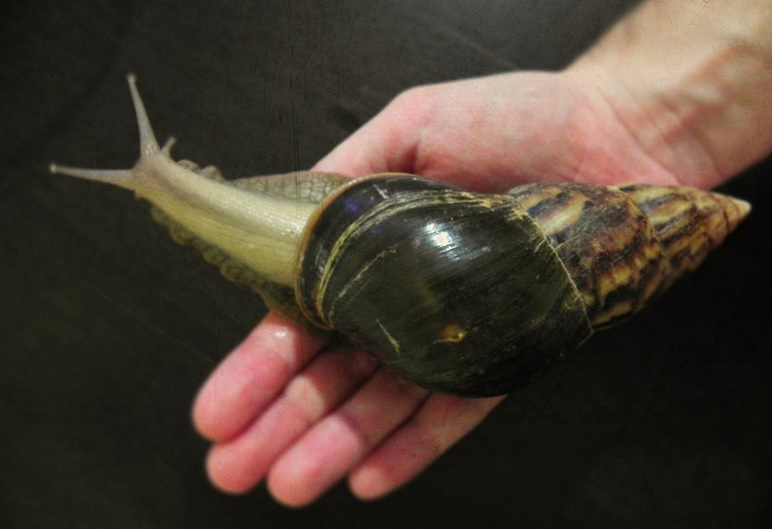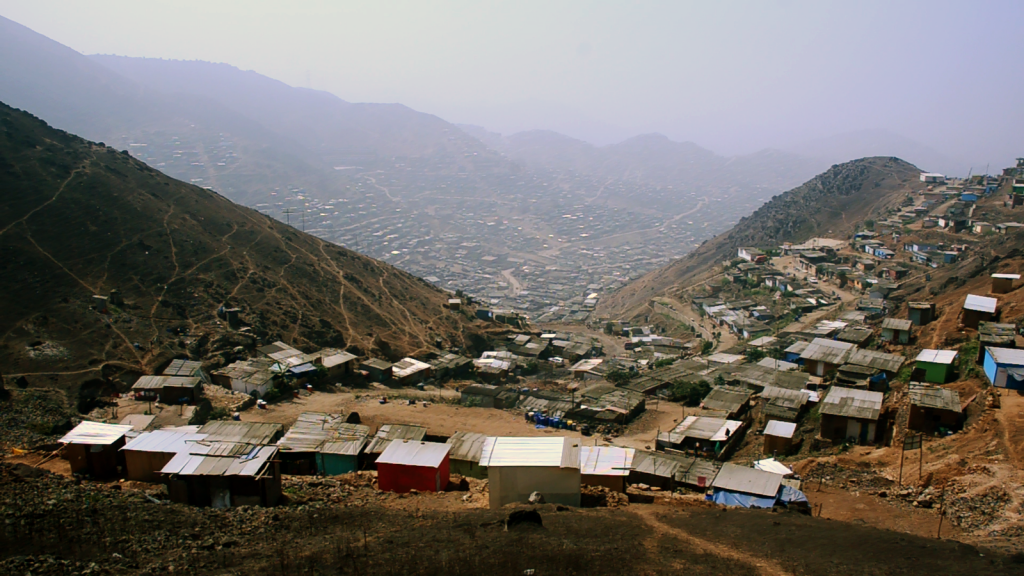Exploring climate change in a living laboratory in Chile
In Chile and around the world, the climate is changing and with it ecosystemic interactions. Continue reading Exploring climate change in a living laboratory in Chile
Science news out of Latin America
In Chile and around the world, the climate is changing and with it ecosystemic interactions. Continue reading Exploring climate change in a living laboratory in Chile
Under the slogan “The future is decided in Mexico,” the Universal Thinking Forum in Mexico City last week brought together 21 presenters under one roof along with 3,000 attendees. The speakers presented in just 21 minutes their ideas and proposals on philosophy, politics and science and how to change the world. Question and answer … Continue reading 21 minds met in Mexico to talk about astrophysics, climate change and how to improve science in Latin America.
Since 2006, Latin American students have been designing biological machines with specific missions: to remove nickel from contaminated drinking water in Colombia; to sense and respond to arsenic in Argentina; and to target and destroy cancer tumors in Mexico. These projects are university submissions to the International Genetically Engineered Machine competition, iGEM, started in … Continue reading Engineering life in Latin America
Chile harbors optimal conditions for scientific research: clear skies for exploring the cosmos, 4,000 km of diverse environments from the Atacama Desert to Antarctica. These “natural laboratories” attracted Charles Darwin and today they attract scientists from around the world. Next week, they will attract more than 200,000 students, teachers, scientists and the general public. … Continue reading Chile’s weeklong science party
Originally published in Spanish in July 2012. Colombia has lost 50 percent of its glaciers in the last fifty years. Today, six glaciers remain nestled among the highest peaks of the three mountain ranges that traverse the country. Scientists are scrambling to monitor and explain the rising atmospheric temperatures and changing weather patterns that have … Continue reading Colombia’s disappearing glaciers
Yasuní is the most biologically diverse place on Earth. But do we value more the oil it sits on top of? Continue reading Ecuador’s Yasuni National Park in the age of synthetic biology
 |
by Ali Hendren
In 1988 at an agribusiness expo in Curitiba in southern Brazil, giant African land snails (Achatina fulica) were heralded as a promising new food source to replace smaller escargot snails. The introduction at the fair was so widely advertised and aggressively marketed that commercial breeders, cooperatives and even private homeowners began rearing the snails–endemic to eastern Africa–immediately with kits sold at the expo.
“The snails were supposed to represent social and economic progress for Brazil,” says Roberto Vogler, an Argentine scientist who studies the snails along the border his country shares with Brazil. “They were going to position the country as the world’s leading supplier of escargot.”
But a booming escargot market in Brazil never materialized. Many of the smaller producers had neither the means to properly process the meat nor the public demand to drive a now flooded market. Frustrated with their failed investment, operations were abandoned and snails were released into the wild in overwhelming numbers.
Today, the infestation has spread throughout Latin America–and not at a snail’s pace. They’ve invaded 24 of Brazil’s 26 states, spread through Venezuela and Colombia and have breached the borders of Paraguay, Argentina, Ecuador and Peru–posing both an agricultural and a public health threat. The snails are sweeping the continent carrying parasites and an appetite for most any crop.
The snails’ pace
On paper, the introduction of A. fulica for escargot farming in Brazil appeared promising. The snails are larger Continue reading “Giant African land snails are invading Latin America”
Over the past two decades, a deadly fungus previously only found in tropical and subtropical climates has begun infecting humans in other climate zones. So how has this fungus increased its reach?
 |
In 1999, a highly infectious fungus called Cryptococcus gattii emerged on Vancouver Island in Canada. By 2007, the strain had killed 19 people and sickened more than 300 humans and animals on the island. The fungus has since spread into the United States with dozens of cases reported in California, Idaho, Oregon, and Washington. But where had this infectious fungus come from?
Before the Vancouver Island outbreak, C. gattii didn’t exactly fit the typical profile of a fatal infectious disease for the region. It was known to cause infections in humans and animals but never at the high rate that was reported on Vancouver Island. And previously, those infections were in tropical or subtropical climates where the fungus typically resides in tree hollows. Scientists have been puzzled by where the strain had come from and how it adapted to the cold so well.
Now, a new study by a group of international researchers might have answers to both of those questions. In a paper published in the journal PLoS ONE last week, the team reported that this strain of C. gattii originated in the rainforest of Northern Brazil where the genetic diversity of the pathogen is relatively high. In addition, they believe that global warming trends might be playing a role in the fungus’s spread as well.
Continue reading “Human fungal outbreaks traced to Brazil rainforest”
A new census of Andean condors taken near Chile’s capital of Santiago has tallied 300 birds. Started in 2011, researchers and volunteers have counted the soaring birds three times a year from six different observation stations on the mountains surrounding the city. They want to learn more about their country’s national bird—the Andean condor’s seven-foot wingspan and taste for carrion are some of the few things researchers know about these scavengers.

|
“Our numbers are preliminary but clearly valuable because 300 is higher than condor populations counted in other countries,” says Victor Escobar, an independent biologist working with the Chilean ornithology group R.O.C. which led the census. According to Escobar, Bolivia has counted 80 Andean condors (Vultur gryphus) in the Apolobamba range while 200 have been counted near Rio Negro in Argentine Patagonia. “Unfortunately, we don’t have numbers for the entire Andean range,” he says. “But that’s why we started this project.”
Researchers estimate there are around 10,000 Andean condors living throughout the Andes mountains — from northern Colombia to the tip of Patagonia. Though poaching has driven down numbers in Venezuela and Colombia, populations are generally thought to be stronger further south. Condor censuses are sporadic and generally local in nature.
Continue reading “Andean condor census in Chile finds 300 birds near Santiago”
by Aleszu Bajak.
“This is the real Peru,” says eighteen-year-old Frank Rodas as he spreads his arms. He adjusts his baseball hat and looks down into a hazy valley at Villa Maria del Triunfo, a shantytown of sixty-thousand that blankets the hills of southern Lima. “What you see in downtown Lima is all just a screen.”
One hundred and fifty thousand people pour into Lima every year from Peru’s provinces. Like Rodas, most end up in pueblos jóvenes—literally young towns—in improvised dwellings with no running water and sporadic access to electricity. This constant influx means houses are added by the day, built into the rocky hillside with walls of salvaged wood or concrete if the family can afford it. Like Rodas´s parents, most immigrants come to Lima to find work, shelter, and perhaps a way to break out of poverty—they aren’t able to build themselves homemade shelters, except in some of the poorest areas of the country, where they often do so on unstable ground. Paradoxically, many residents of the pueblos jóvenes are forced to pay two to three times more than they would to live in downtown Lima: these settlements are unauthorized and so subject to extortionist landlords who tax access to pirated utilities.
 |
To reach the upper limits of Villa Maria del Triunfo, our taxi crawled up a dirt road past hundreds of these ramshackle houses. Roosters stood guard out front, children played in the street, and the stench from pig pens spread throughout the settlement. Unlike most of the crudely-built houses in Villa Maria, the hogs and their sties are legal on these hillsides; Lima has for a long time zoned some of its marginal districts as agricultural. When the road became too steep for the beat-up station wagon, we got out to walk the last few steps to the highest point, a small neighborhood named Flor de Amancay after the bright yellow flower that blankets these hillsides throughout Lima’s damp winter.
Just outside of Buenos Aires, upon a patchwork of cornfields and cow pastures where gauchos still roam, a grassroots movement is taking shape. Continue reading A farm runs on homemade biodiesel in Argentina
On June 3 2011, Patagonia cracked open. A thick brown cloud of ash shot nine miles into the air, ejected from the Puyehue-Cordón Caulle volcanic complex in Chile’s lake district. Within hours, ash was raining down on both sides of the Argentine-Chilean border, forcing schools, roads and airports to shut down. Now, more than nine months later, the complex is still rumbling and sending ash billowing into the Argentine resort towns of Bariloche and Villa La Angostura.
Puyehue-Cordón Caulle sits along an eighteen-kilometer section of the Andes about 100 kilometers east of Osorno in southern Chile that churns with volcanic activity. It has more than 60 historically or potentially-active volcanoes. Last June’s erupton didn’t originate in a single crater but came from many fractures and fissures. One hundred million cubic meters of pyroclastic material were released per day in the initial phase of the eruption, according to Chile’s National Geology and Mining Service (Sernageomin). 3,500 people were evacuated from the immediate vicinity in Chile and towns as far as Bariloche in Argentina—about 130 kilometers away—were blanketed in a foot of volcanic ash that short-circuited power lines and closed highways.
“We’re going to be paying for this for years,” says Gustavo Villarosa, a volcanologist based in Bariloche at the National University of Comahue. The ash fouled the city’s sewage treatment plant and municipal water purification system, says Villarosa. “The pumps corroded, the filters were blocked up” Local officials had time to plan for the eruption but didn’t, he says.
Continue reading “A year later, the effects of a volcanic eruption still plague Patagonia”
Patagonia’s endangered huemul has its share of predators. Pumas, foxes, and the occasional poacher are expected, but a new threat has become a hounding concern in Chile’s Aysen region. Dogs belonging to residents living near Lake Cochrane are killing young fawns, and injuring and sometimes killing adult huemul.
The huemul is a rare creature in the Patagonian landscape. An Andean deer that bears a strong resemblance to North American deer, the huemul (pronounced weh-MOOL) tends to live in much smaller groups. They are also docile creatures, a characteristic that may have sealed their fate.
“You can almost reach out and touch them,” says Paulo Corti, an animal ecologist and veterinarian at Chile’s Austral University in Valdivia. He’s been tracking huemul populations since 2003 and estimates there are fewer than 2,000 left, living in 12 fragmented populations along the Argentine and Chilean slices of Patagonia, the largest of which lives in Chile.
Since the arrival of Europeans in the 1500s, the huemul population has been in slow decline. Once abundant from central Chile to Tierra del Fuego, hunting initially cut huemul numbers in half. Now, the patchy Patagonian forests they inhabit are continually being converted to farmland.
Continue reading “In Chile, threats to the endangered huemul include dogs”